Have you ever got on your ATV and tried to start it only to have the engine spin like crazy but not start. Or, have you encountered your ATV losing power and performing more like a golf cart than your fun ride?
You may have a a low compression problem!
What Causes Low Compression in an ATV? Low compression can be caused by several issues. Most of these problems stem from wear and tear and improper maintenance where low compression results from one of the following:
There are other things can cause similar issues to low compression. You probably want to look at these first to rule them out.
The problems we find more often than low compression that cause power loss include the folloing
If you have ruled these common problems out and still have issues, it is time to check out your cylinder compression.
Before we go any further, we should eliminate the obvious. Have you checked your compression gauge against a known cylinder? Pressure gauges are sensitive pieces of equipment and are susceptible to:
Before you take any other action, it is always good to make sure that your compression gauge is accurate and working properly.
Are you using a pressure gauge that threads into the sparkplug hole and fits tightly? The types of pressure gauges that have the tapered rubber end that require you to hold the rubber plug to keep the seal just don’t work reliably so we recommend swapping them out if you have one.
There are a couple of ways to test the operation and accuracy of your compression gauge.
Once you are satisfied that your compression gauge is working properly, you can begin diagnosing your compression problem.
There are only a few things in an internal combustion engine that can lead to low compression in the cylinders. Unfortunately, diagnosing which culprit is the cause of the low compression almost always requires disassembling the engine to some degree.
Cracked Spark PlugThis one is usually easiest to diagnose. You may notice that your ATV seems to have lost power or isn’t performing up to its usual levels. When you get to the point of checking the compression levels, you find that there is no loss of pressure on any of the cylinders. This can leave you scratching your head.
Before you grab your tools and start tearing into the engine, take a moment, and look at the spark plugs. Even a hairline and almost microscopic crack in the ceramic part of a sparkplug can be enough to cause a loss of compression and a noticeable loss of performance.
If your compression gauge confirms that you have good compression in all the cylinders, the first suspect should be the spark plugs. The easiest fix is to replace all the spark plugs on your ATV engine and see if it fixes your problem.
The easiest fix is to replace all the spark plugs on your ATV engine and see if it fixes your problem.
Spark Plugs for your ATV are cheap so this can be a good place to try and get lucky. For a few bucks, see if you can find the right spark plug on Amazon.
Bad or leaking Head GasketThe gasket that fits between the heads of your engine cylinders and the engine block takes a lot of abuse. They must endure:
The tiniest imperfection in a head gasket can be enough to seriously affect the performance of any engine, not just your ATV.
To check a head gasket leak, look for some of these common signs and symptoms:
If one or more of these symptoms is found, you might have a bad head gasket. While replacing a head gasket is possible for a weekend mechanic, it is not something that most people have either the tools or the skill to perform. This is one of those repairs best left to the trained technician at the dealership if you are not confident in your abilities.
While replacing a head gasket is possible for a weekend mechanic, it is not something that most people have either the tools or the skill to perform. This is one of those repairs best left to the trained technician at the dealership if you are not confident in your abilities.
The valves on your four-stroke ATV engine control the flow of fuel enriched air and exhaust in and out of the cylinders. A valve, either intake or exhaust, that doesn’t seat properly, can prevent the cylinder from holding the proper compression.
Likewise, a valve that is cracked or broken will prevent the piston from creating enough pressure in the cylinder to operate properly.
The valves sit against the cylinder head, allowing the piston to compress the fuel-air mixture in the cylinder. Many high-performance ATV engines are fitted with valve seats that aid in the sealing to allow higher compression in the cylinder. Several things can go wrong with the whole valve assembly:
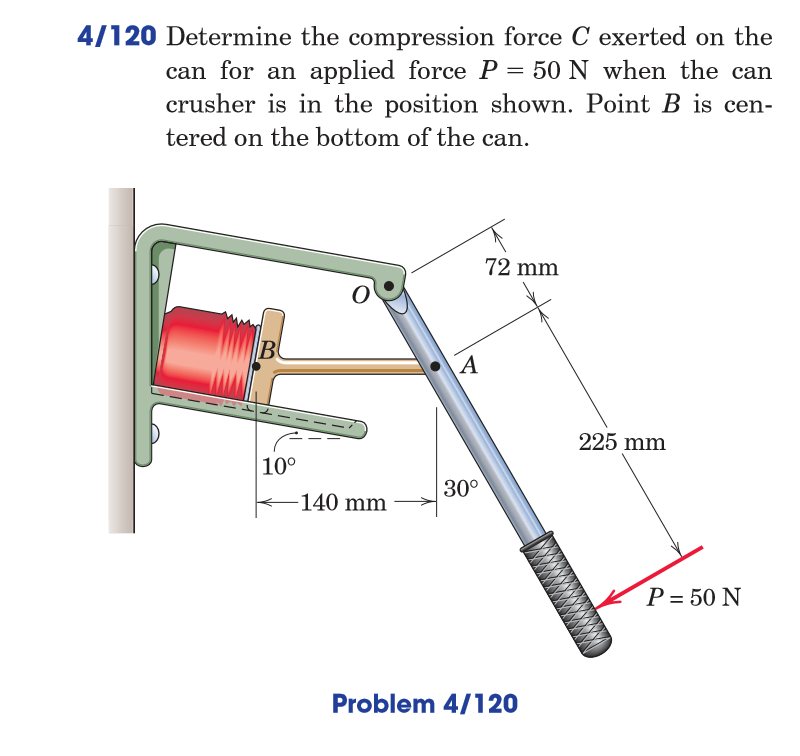
Repairing or replacing bad valves or components of the valve train assembly requires removing the cylinder head from the engine block and then removing the valve or valves from the cylinder head.
Most valve repairs require that the valve seats in the cylinder head be lapped or polished before new valves are installed.
This is a job beyond most amateur mechanics and should be left to the professionals with the right tools and training. There are several common ATV services that include valve repairs as well that may be worth looking into.
In this repair article, we looked at the prices you can expect to pay for a valve job and other repairs.
Worn Piston RingsIf you have noticed a loss of performance in your ATV and you are noticing blow-by from your exhaust, you may have a piston ring problem. Blow-by is those puffs of blue smoke that happen when you first start your ATV.
Piston ring wear is normal, even in the best-maintained engine. In high-performance ATV engines, piston ring wear can happen quicker than you think, especially if maintenance protocols aren’t followed closely.
Worn piston rings can cause several problems inside your ATV engine.
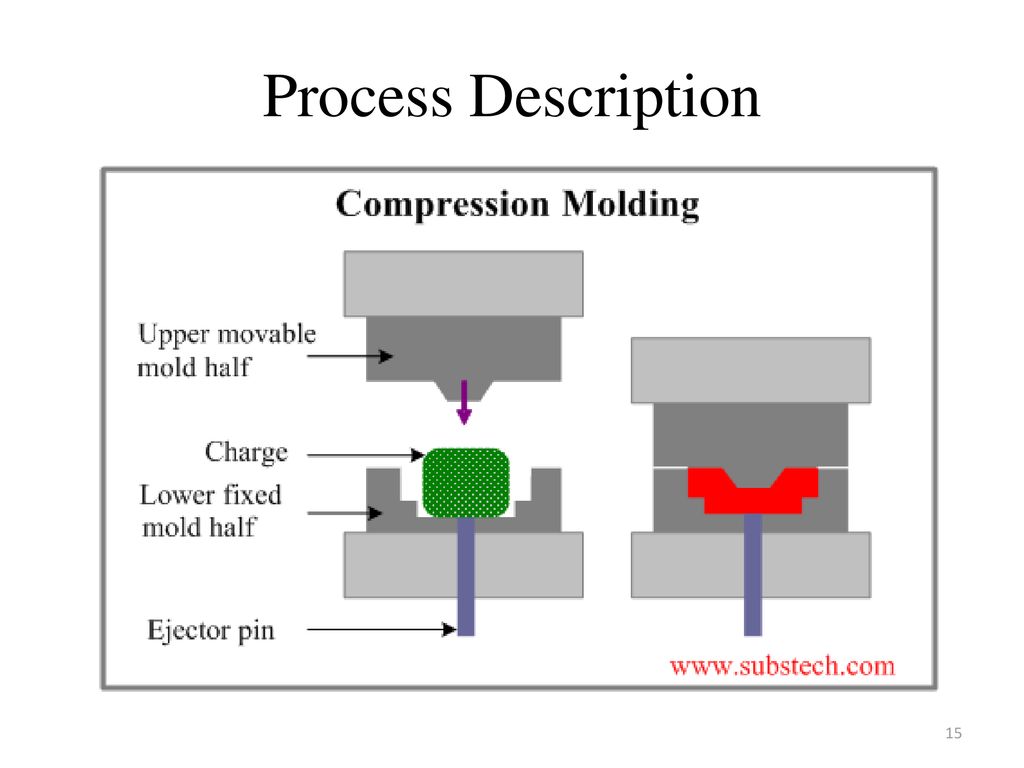 This excess oil can foul the spark plug, create build up on the valves and valve seats, and interfere with the proper combustion of the fuel-air mixture, all of which can lead to a loss of compression.
This excess oil can foul the spark plug, create build up on the valves and valve seats, and interfere with the proper combustion of the fuel-air mixture, all of which can lead to a loss of compression.If worn or broken piston rings are the culprit to blame for your loss of compression and performance, it’s time to take that ATV to the shop for some professional attention, installing new pistons or rings is a job that requires knowledge and specialized tools. An engine rebuild of this complexity is usually expensive and not a job many of us would undertake.
We are bummed you are having ATV problems and hope we were able to help you figure out and fix the problem. Hopefully, you are back on the trails soon!
So your ATV is not starting and making strange noises like never before? You may be running through a low compression problem. Don’t worry as here we brought the solutions for you. We will guide you on how to fix your ATV low compression. Also, we will explain what causes low compression on ATV so you don't get stuck with it in the future. Let’s begin!
We will guide you on how to fix your ATV low compression. Also, we will explain what causes low compression on ATV so you don't get stuck with it in the future. Let’s begin!
What are the signs of low compression? Gas leaks from the piston usually cause low compression in an ATV. Your ATV’s engine might not start. If it starts, it may make strange noises. Or it could have low power.
Other signs include leaks in inner valves. The spark plug might be oily; it should be dry. These are what happens if compression is low. You have to look for these signs.
Image from www.dirtbikemasters.com
Learning what drives a low compression to your ATV will help you to avoid any future risks. Here’s a small list of the causes:

If you see any of these, then it is a low compression problem. Otherwise, you may need to observe other issues.
Off-road will keep you dry and safe in water and mud
Find out the best look for you
You can check the low pressure with a pressure gauge. Please be sure to remove all the spark plugs and deactivate the ignition coil. Attach the pressure gauge in the place of the spark plug. Hold on to the throttle and record the maximum reading in the gauge.
There is low compression if it gives a reading lower than average (more on that later in the article). Now you need to fix it accordingly. Read till the end to know how you can solve each problem.
Now we will discuss how to fix low compression in each case. Make sure to identify your situation and choose the solution as per your issue.
Image from www.flanigantireandauto.com
A spark plug ignites the combustion in an internal combustion engine. If the spark plug broke or got damaged, you either lose the compression or get no compression at all. If the spark plug breaks down, it won’t ignite the small explosion to move the piston.
If the spark plug broke or got damaged, you either lose the compression or get no compression at all. If the spark plug breaks down, it won’t ignite the small explosion to move the piston.
If it is malfunctioning, you can easily remove and place it back. It will help you in getting the spark. But if it is broken, then you will need to replace it. A faulty spark plug is among the significant causes of low compression.
You need to remove or replace it. Unfortunately, you can’t check which one is causing the problem. You need to replace them all. Spark plugs are inexpensive so they won't put much stress on your pocket.
But sometimes, the reinstallation of them is enough.
Image from www.hondaatvforums.net
Another major cause of low compression is broken or defective inner gas valves. If the valves are damaged, the gas may leak from them.
Gas may also leak from inner valves if their opening and closing time is not synchronized. It is due to the loosening of springs. The valves do not sit in their place properly, or they overheat so much that it wears out their seals. So check those air intake and exhaust valves.
It is due to the loosening of springs. The valves do not sit in their place properly, or they overheat so much that it wears out their seals. So check those air intake and exhaust valves.
In each case, you have to check every piston. The only way to fix it is to replace it. You need to replace the valve which is causing the gas leak.
Image from www.oards.com
Two to four piston rings are around each piston to seal the air in the ignition chamber. Their purpose is to keep the crankcase and the combustion chambers material separated. Worn out or damaged piston rings let the gas or the fuel enter the crankcase.
It may also result in the leaking of oil into the combustion chamber. Both cases cause low pressure. Do a compression test to check it. If you find a leak, there is a makeshift remedy. You can pour some diesel into the cylinder.
Leave it there for some time. Then do a pressure test. It may solve the issue. But if you still find the leak, replace the rings or the piston immediately.
Image from www.teryxforums.net
A faulty head gasket causes the shift of compression to coolants or the other leaks. The head gasket ensures that every part gets its proper pressure. But a worn-out one will make pressure differences.
A pressure test can point out a bad gasket. If you are observing low compression on adjacent pistons, then the culprit is the gasket.
Other signs you can check are white smoke coming out of the exhaust pipe. The engine is overheating and too noisy. Spark plugs are getting damaged every short time. You may also observe the coolant leaking from the engine.
You can fix it, again, by replacement. But you need to take out the whole engine. It can’t be done without it.
Off-road will keep you dry and safe in water and mud
Find out the best look for you
Mostly a question is asked: will ATV run with low compression? The minimum requirement to run an ATV is 100 PSI. It needs at least 100 PSI to function well. So if it is below the limit, then the sweet answer is, No.
It needs at least 100 PSI to function well. So if it is below the limit, then the sweet answer is, No.
And most ATVs run on a maximum pressure of 250 PSI, but some can go up to 300 PSI.
Now you know how to check any problem that is caused by low compression. And you also know the measures to prevent it. The only catch is that it mostly requires a replacement, and you have to take the whole engine out.
Since now you can identify and fix the problems, your ATV will roar again to its fullest! Are you ready to see how deep you can go?
SPORTSMAN Black
36 EUR
32.40 EUR
-10%
HIT
ENDURO LIGHT Graphite
the most durable
458 EUR
412.20 EUR
-10%
HIT
ENDURO Camogrey
the most durable
657 EUR
591.30 EUR
-10%
HIT
ENDURO Graphite
the most durable
279 EUR
251. 10 EUR
10 EUR
-10%
HIT
ENDURO Graphite
the most durable
657 EUR
591.30 EUR
AQUAMASTER-ZIP LIGHT Camogrey
with central zipper
598 EUR
412.50 EUR
-10%
HIT
ENDURO LIGHT Camogrey
the most durable
458 EUR
412.20 EUR
AQUAMASTER LIGHT Red
reliability & comfort
438 EUR
324.50 EUR
NEODRY Black
17 EUR
11.90 EUR
-10%
HIT
ENDURO Camogrey
the most durable
279 EUR
251.10 EUR
AQUAMASTER Blue
reliability & comfort
647 EUR
582.30 EUR
-30%
HIT
AQUAMASTER Red
reliability & comfort
259 EUR
181. 30 EUR
30 EUR
-40%
HIT
AQUAMASTER Orange
reliability & comfort
259 EUR
155.40 EUR
AQUAMASTER Red
reliability & comfort
677 EUR
591.40 EUR
-40%
HIT
AQUAMASTER Camogreen
reliability & comfort
259 EUR
155.40 EUR
BELT
9 EUR
8.10 EUR
ENDURO BF Camogrey
bootfoot waders
528 EUR
475.20 EUR
ENDURO BF Camogreen
bootfoot waders
289 EUR
173.40 EUR
ALL SEASON Black
62 EUR
55.80 EUR
ENDURO BF Camogrey
bootfoot waders
329 EUR
296.10 EUR
Explore all
Often, when buying a car, they ask you to find out what engine compression is.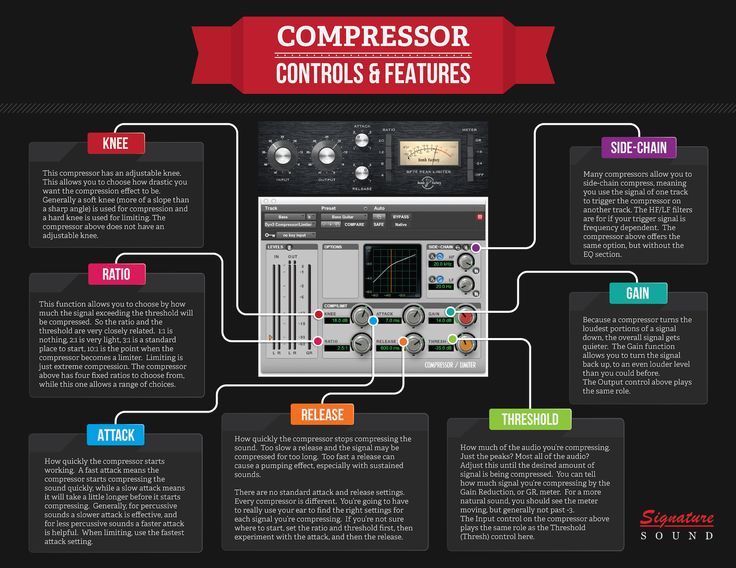 This is one of those parameters that can indicate the state of the internal combustion engine and its dynamic characteristics.
This is one of those parameters that can indicate the state of the internal combustion engine and its dynamic characteristics.
The compression of a car engine is the pressure that is created in the cylinder at the end of the compression stroke, i.e. when the piston reaches top dead center. In fact, this parameter can be called the maximum compression pressure that is created during an engine compression test. Compression is an extremely important parameter for a power unit. If it is normal, then the engine will work stably, demonstrating sufficient power and throttle response, and if it becomes low, then there is only one sentence for the car - “capital”, which means engine overhaul and serious financial expenses.
There is also such a thing as the compression ratio, which is indicated in the technical documentation for the car. At first glance, it may seem that these two terms are identical and their indicators should be the same, but in fact this is not the case. The compression ratio is a mathematical characteristic that describes the geometry of the cylinder, or rather, it is the ratio of the total volume of the cylinder to the volume that forms above the piston located at top dead center or, as this parameter is also called, the volume of the combustion chamber. This characteristic is unchanged (excluding deposits), while the compression drops as the engine wears out.
The compression ratio is a mathematical characteristic that describes the geometry of the cylinder, or rather, it is the ratio of the total volume of the cylinder to the volume that forms above the piston located at top dead center or, as this parameter is also called, the volume of the combustion chamber. This characteristic is unchanged (excluding deposits), while the compression drops as the engine wears out.
For measurements, a device called a compression tester is used. In fact, it is a pointer pressure gauge with a flexible hose with a threaded tip, a check valve that provides a sufficient level of sealing, a handbrake for bleeding air and zeroing the readings, as well as possible adapters for different threads, which is important for checking the compression of diesel engines since they measure are carried out through different holes of nozzles or glow plugs.
Two people participate in the measurement. One is in the passenger compartment - turns on the ignition, turns the starter, while depressing the gas pedal to the floor, thereby fully opening the throttle.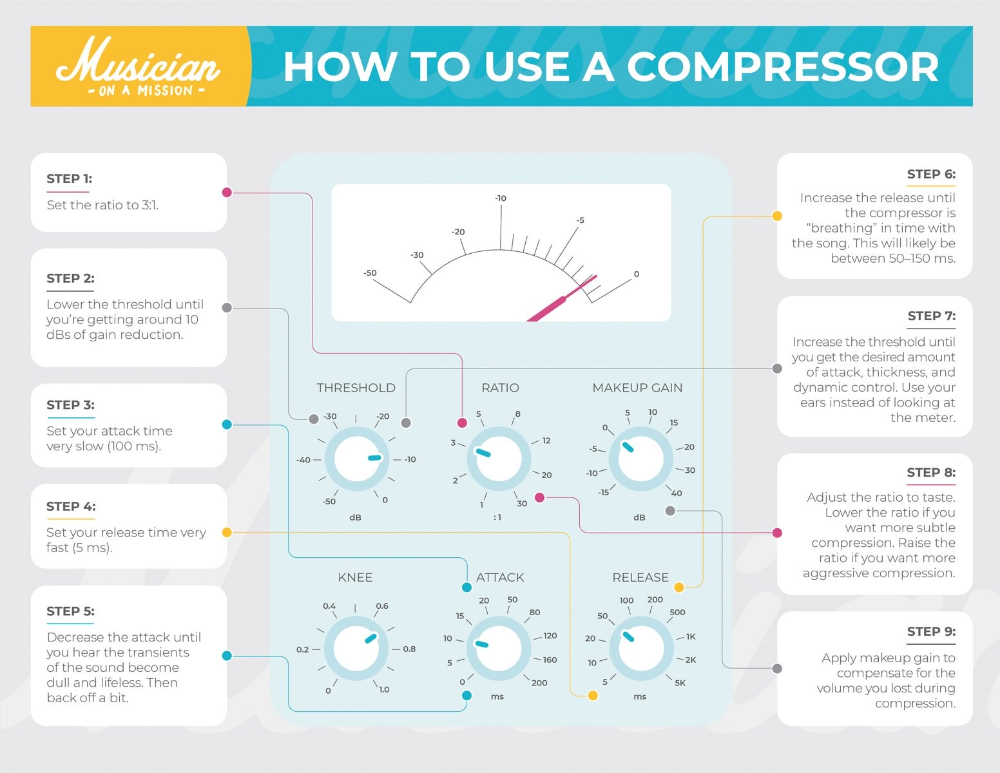 The other one directly takes measurements from the outside.
The other one directly takes measurements from the outside.
- make sure that the battery is charged, the ignition system and specifically the starter are in good condition;
- start the engine and warm it up to about 80 ° C;
- turn off the engine and de-energize the fuel pump in any way, for example, by pulling out the appropriate fuse;
- unscrew the spark plugs, and on the diesel engine, the injectors and in place of the first screw the nozzle of the compression gauge;
- depress the gas pedal as much as possible and crank the starter a few turns - usually 5-7 turns are enough;
- take the resulting pressure gauge reading;
- unscrew the pressure gauge from the socket of the first candle, screw it into place of the second, repeat the operation and so on for each cylinder.
As a result of measuring the compression in the engine, real pressure values in the cylinders will be obtained, from which it is already possible to draw conclusions about the state of the power unit. The norm is considered to be deviations not exceeding 10% of the norm and between the cylinders. If there is a larger spread and low compression, then this means that air is “leaking” from the cylinder and you should think about ways to increase compression or repair.
The norm is considered to be deviations not exceeding 10% of the norm and between the cylinders. If there is a larger spread and low compression, then this means that air is “leaking” from the cylinder and you should think about ways to increase compression or repair.
Compression may also be higher than normal due to large deposits and an increase in the compression ratio.
You can try to find out the reasons for the pressure drop in the "problem" cylinder by additional measurements, which are carried out by pouring 50 ml of engine oil into the suspicious cylinder and re-measuring compression. There are two possible outcomes of the check. First, the pressure remained low. This means that air leaks from above, for example, through a burnt-out valve or through a cylinder head gasket. Secondly, the pressure has risen significantly. This may indicate, for example, coking of the piston rings.
There are other ways to check, for example by using compressographs.
The measurement principle of this device is similar to that of a compression meter, only the results are recorded on paper sheets or plastic cards, which is very convenient for archiving and later comparing with data obtained during other measurements. The disadvantage of this device is the difficulty in assessing the dynamics of compression increase.
Compression can be measured more efficiently with modern motor testers.
The essence of the measurements is to determine the pressure in the cylinders by such a parameter as the amplitude of the current ripples during the crankshaft cranking. The advantages are that motor testers allow you to measure all cylinders at once without removing the spark plugs, which is very convenient, especially when testing multi-cylinder power units.
An interesting fact. There is one non-standard old-fashioned way to find out the condition of the cylinders without a pressure gauge and other instruments.
To do this, candles are unscrewed one by one, and a kind of wad from a crumpled dry newspaper is inserted in place of each. If, when cranking the crankshaft, the wad literally shoots, then everything is fine with the cylinder, and if it remains in place, then there is a problem. Of course, this test method will not show the exact pressure in the cylinders. This method has long been hopelessly outdated and can safely be called a real exotic.
The question is reasonable. Why take measurements if there is nothing to compare the results with? There is a simple calculation on how to find out the engine compression rate of a particular car model by the compression ratio specified in the technical documentation.
In this way, for example, you can find out what compression of VAZ engines is considered the norm. For the VAZ 2106, it is 11 kgf / cm2, for the VAZ 2110 - 13 kgf / cm2. For, for example, a diesel unit installed on a Ford Focus, this value is higher - 18 kgf / cm2, and for Mitsubishi ASX with power units of 1. 6, 1.8 and 2.0 liters, the compression value will vary from 12 to 13 kgf / m2.
| Causes | Photo | Remedy |
|---|---|---|
| Clogged air filter. | Replace the air filter. | |
| Piston seizing due to persistent overheating, lack of lubrication or ingress of solid particles. | Change the engine oil together with the oil filter. Use special additive. In case of serious problems, carry out repairs. | |
| Piston burnout. | Replace. | |
| Valve distortion due to broken timing belt. | Repair and replace. | |
| Mistakes when installing the camshaft. | Install the camshaft exactly according to the marks. | |
| Malfunction in the gas distribution system. | Correct the problem by adjustment or repair. | |
| Piston ring sticking or sticking. | Use special decarbonizing fluid. If there are serious problems, replace the piston rings. | |
| Violation of the integrity of the cylinder block gasket. | Replace the cylinder head gasket. | |
| Incorrectly adjusted valves. | Adjust the valves. | |
| Increased wear of the cylinder-piston group. | Use special additives. In case of severe wear, repair. |
Practice shows that all of these malfunctions, which lead to loss of engine compression and unscheduled repairs, occur due to aggressive driving, constant urban traffic with traffic jams, use of low-quality fuel or engine oil, as well as due to improper maintenance or negligent attitude to the car. The conclusion is simple. In any case, it is necessary to make it a rule to periodically measure the level of pressure in the cylinders and promptly eliminate the problems that arise.
Experts recommend checking at least 30-40 thousand kilometers, especially since the procedure is simple and can be carried out independently. This must be done for preventive purposes, in order to always, as they say, keep abreast and prevent serious problems from arising. The first signs of the need for an extraordinary check of the pressure in the cylinders may be increased consumption of engine oil, difficult cold start, the appearance of a bluish exhaust, unstable engine operation at neutral speeds. It should be borne in mind that the causes of these symptoms may be hidden not only in the engine. For example, at unstable idling, the problem may be related to the ignition system.
A drop in compression in one or several cylinders at once is a serious problem, but it is not a death sentence, as many car owners think. Compression can be increased not only through overhaul and replacement of everything and everything. Many existing problems can be solved, as doctors say, through conservative therapy, without surgical intervention.
Many existing problems can be solved, as doctors say, through conservative therapy, without surgical intervention.
For this, experts recommend using special compositions of the new generation Suprotec. Today, the following additives from this manufacturer are most popular:
- "Active Plus" - an additive in the form of a tribological composition in engine oil, which can be used with engines running on gasoline, diesel fuel or gas;
- "Active Standard" - an additive in engine oil designed for non-turbo gasoline engines, the working volume of which does not exceed 1.6 liters;
- "Active Premium" - an additive in the form of a tribological composition in the engine oil of off-road vehicles and cars operating under high loads with a working volume of 2.5 to 5 liters;
- "Active Regular" - a tribotechnical composition that is added to engine oil and helps maintain a protective layer on rubbing surfaces after all stages of processing; - "MAX DVS" - for trucks;
- "MAKS DVS" - for trucks;
- "MOTOTEC 2" and "MOTOTEC 4" - for 2- and 4-stroke engines of motorcycles, mopeds, snowmobiles and other equipment.
Experts recommend that if a drop in compression is detected, also use a long-term soft flush of the Suprotec Aprochem engine. It is added to engine oil 200 km before the planned replacement.
All additives are highly effective. For preventive purposes, they can be used on an ongoing basis. According to numerous reviews of vehicle owners, the results of their work in the form of engine compression restoration exceed all expectations.
One of the most common problems that off-road enthusiasts face is the drop in speed of the ATV or “dips” during acceleration. The interesting thing is that the engine can work perfectly, but the dynamics of the device is noticeably reduced. Therefore, it is important for the rider to understand why the ATV is not gaining momentum, and how to solve this problem.
Motorcycle enthusiasts who bought an ATV in the showroom know how it worked from the beginning. But with used equipment, everything is more complicated. Ryder does not know how the apparatus originally worked.
But with used equipment, everything is more complicated. Ryder does not know how the apparatus originally worked.
It is also worth considering that low-power models are not very dynamic. This applies to vehicles with an engine from 50 to 110 cubic meters. But if the 150cc quad is not revving, you need to look for the cause of the problem.
The reason for the deterioration of dynamics and a drop in speed can be almost any little thing, from a clogged muffler to low-quality fuel. But most often, the problem occurs due to:
Remember that regular maintenance will help to avoid such problems. Ideally, maintenance should be carried out 1-2 times a season.
Owners of carbureted ATVs experience rev drop quite often. This is due to incorrect system settings. If the carburetor is not tuned, the rider will experience:
This is due to incorrect system settings. If the carburetor is not tuned, the rider will experience:
The carburetor must be adjusted to keep the ATV engine running. The procedure includes setting: idling, gasoline level and fuel quality. It will be difficult for novice riders to understand the nuances of the procedure, so it is better for them to contact a specialized service.
Be aware that too rich or too lean a fuel mixture will result in carbon deposits and a drop in rpm. But pay attention to the fuel itself. If the gasoline is of poor quality, the device will be “sluggish” or refuse to start at all. Therefore, first of all, the motorist needs to drain the old fuel and fill in "fresh" fuel.
If you notice that the quadric started to start poorly, the speed dropped and the equipment is not very stable, you should check the compression. It usually decreases due to:
The best value for a used ATV is 10 bar. And the higher this number, the better. In most devices, compression reaches 12-13 bar.
But what to do if the compression barely reaches 8-9 bar? In this case, you need to inspect the entire assembly, replace worn parts (rings) and lubricate all components well.
Note: If the compression is low, immediately check all connections. Perhaps one of the tubes has lost its tightness.
Another reason why the ATV does not keep speed is damage to the CVT belt or roller.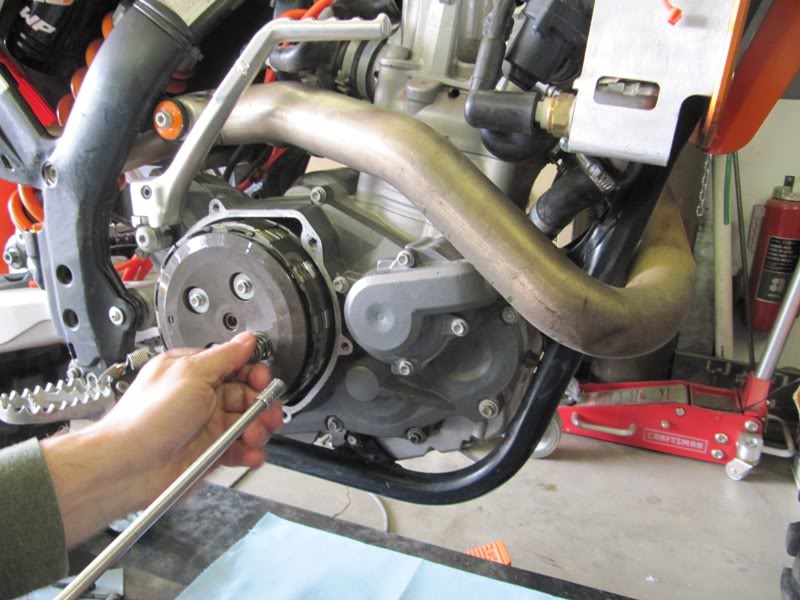 To fix the problem, you should carefully inspect the node. If the belt is badly worn or thinned by more than 1-1.5 cm, it must be changed.
To fix the problem, you should carefully inspect the node. If the belt is badly worn or thinned by more than 1-1.5 cm, it must be changed.
To replace:
Note: It is recommended to install English or European components, since Chinese belts last an order of magnitude less.
You also need to make sure that the variator roller is the right size. If the element is too large, the dynamics of the quad will deteriorate. And if you install a smaller roller, the ATV will not be able to reach maximum speed.
Since most ATVs have four-stroke engines, their powertrains need good lubrication. And often, the ATV engine does not gain momentum due to lack of oil or its poor quality.